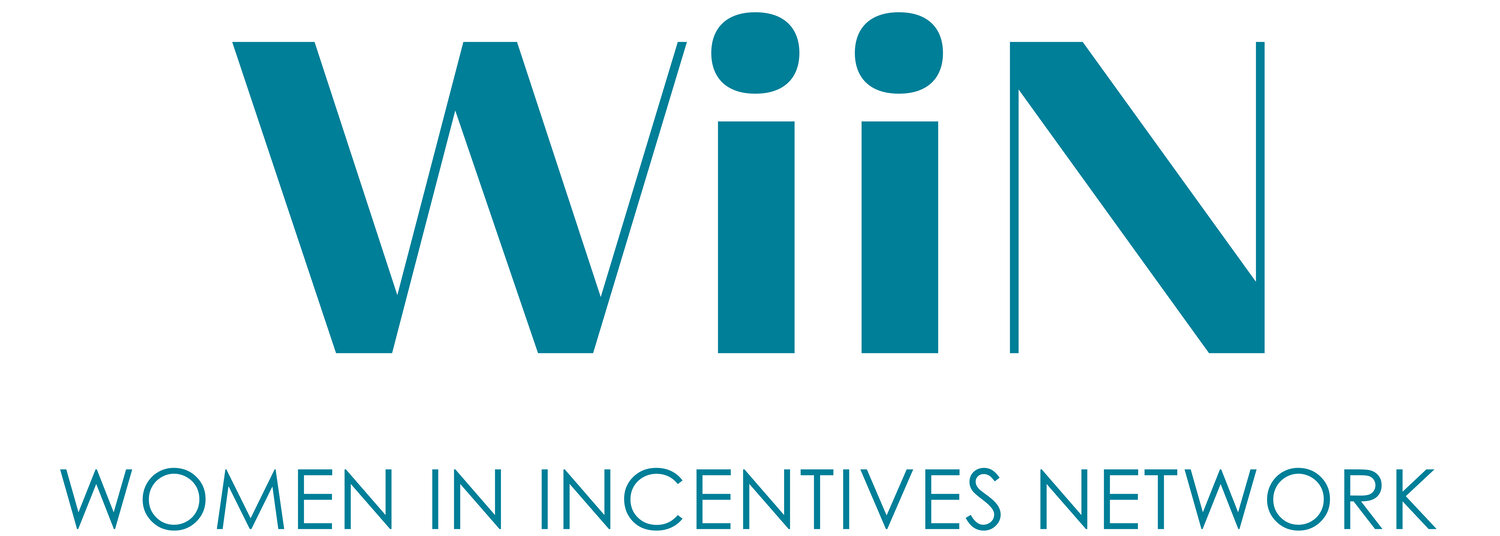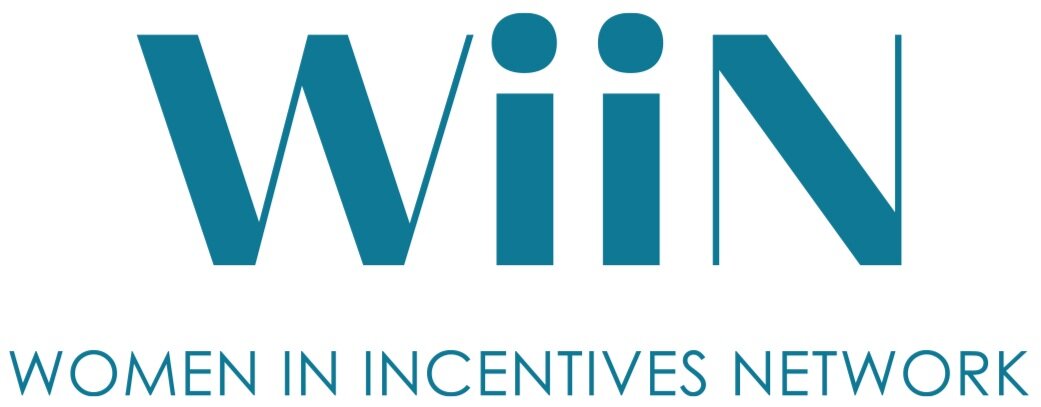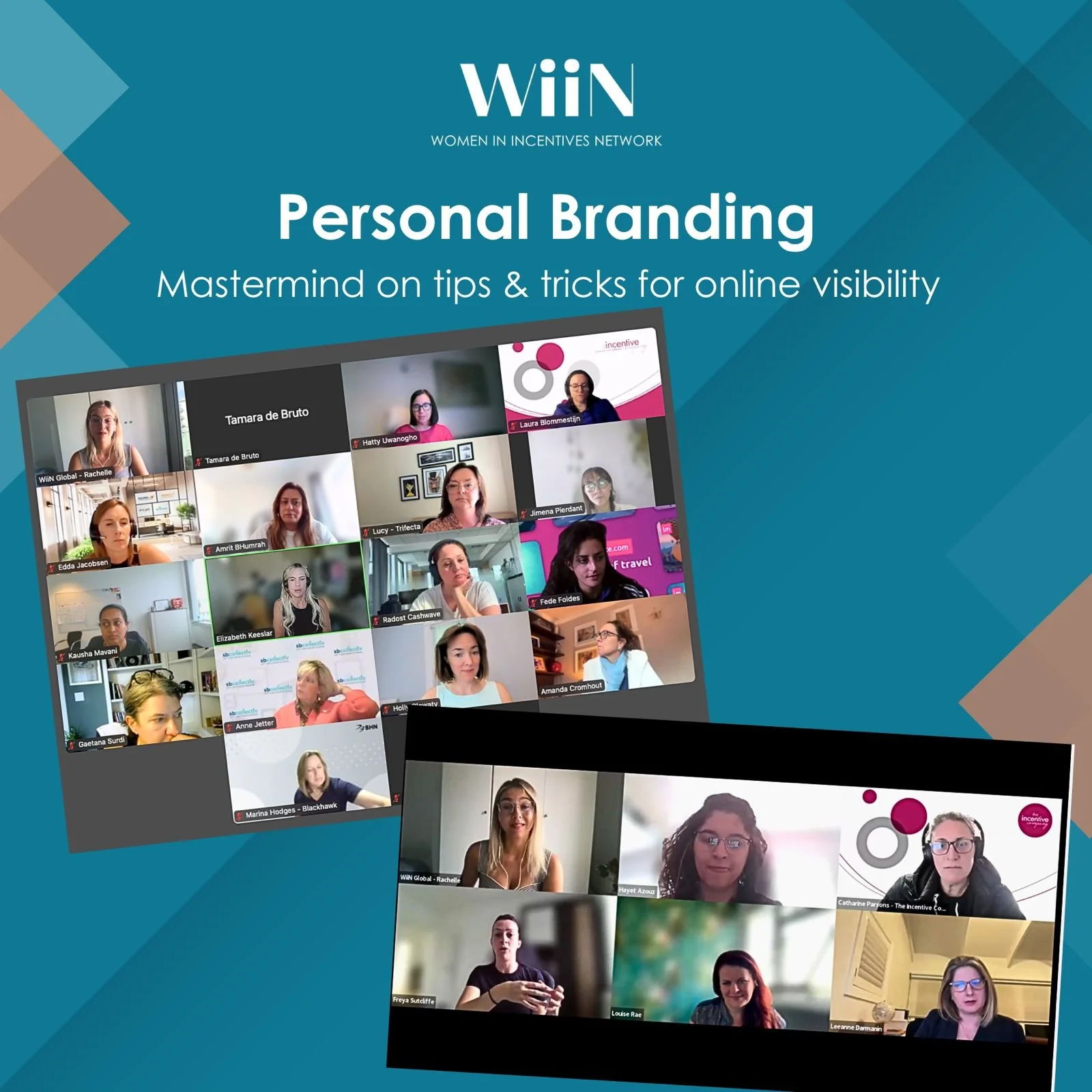Personal Branding session: Recap
Our WiiN sessions are all about delivering insights, and it’s rare to get a session where nearly everyone feels in a very similar position, but our recent session on personal branding was one where nearly everyone felt they had something to learn or room for improvement.
If you’ve been off LinkedIn for a while, and have ever struggled to get consistent posts and relevance balanced, this recap is one for you.
“When you think of personal branding, what does it mean to you?”
The team’s responses to our kick-off question were vast - from who you are, your reputation, showing your values and expertise, to how you’re perceived.
Personal branding encompasses various aspects, including your visibility and how you’re perceived when opportunities arise.
It’s best described as “the process of creating, managing, and promoting a public perception of oneself.”
It’s more than just fluff. One member shared she had gotten a job due to her relevance in the market through personal branding, and another had been invited to a speaking panel as a direct result of work on personal branding.
What are the challenges with personal branding?
The challenge was felt across the board - how can we develop authentic personal branding outside of the ‘’typical’ LinkedIn-style self-promotion or basic AI-generated content, producing an overly curated online image? How can we offer real-world authenticity sustainably? As one attendee put it perfectly:
“I'm battling to find that authentic voice. Because I've been in the industry a long time, I've got something to say, but how do you say it that really impacts somebody, but authentically? I don't just want to put something out there for an impression or a reach or a like, you know, I really want to put something out there that's going to make a meaningful impact.”
This was echoed across the sessions, with fears that friends in real life might laugh at a personal branding exercise or be unsure that what they had to say was useful.
“I don't know if you call it imposter syndrome or you call it something else or you put a different label on it, but it doesn't come naturally to me to sort of kind of go, oh, I'm thinking about this today and I want to share that. My LinkedIn posts are all about something I attended, something my company has done, or a panel I was speaking at. I feel that if I've got something to add, I'm just not sure if people might be interested in that. I'm sure they are, but it's just that doubt in myself.”
Most were aware they wanted to be online more often, but were unsure what they wanted to say, were unsure their views were worth sharing, or even felt that cultural factors or gender added pressure to downplay self-promotion.
“I'm going to be honest and say, I think a lot of it's very, and I'm thinking specifically of the LinkedIn space. It's very, very, at least my feed dominated by men.”
The feeling in both sessions was of powerful, inspiring women with stories to tell, still being sidelined and unsure of where to begin, overthinking their personal branding. It's natural to do so. It feels like one misstep, one post that crashes out or, (worse, gets your friends texting you with some laughing emojis) would be the end of the world!
However, across the board, the stories that resonated and the personal branding that was memorable and celebrated were those true personal stories. No AI slop, no masculine showboating.
Some women’s stories included moving to a new city and feeling lonely, while others included the trials of balancing motherhood with work.
Other creators were celebrated for doing a mix of posts, some offbeat, some goofy, and some serious, and constantly engaging.
Posting isn't the be-all and end-all.
Personal branding isn’t just about making mic-drop worthy statements online and getting hundreds of likes. It’s also about the presentation of yourself. From profile photos on LinkedIn to how you present yourself as someone worth connecting with, attendees were inspired by looking at other profiles.
As one attendee stated: “One of the struggles I have is that my job is so undefinable that it makes it really difficult to actually convey what I do and who I am.”
A key takeaway for readers is to examine profiles and truly understand what good looks like. Ideas include clear bios, adding featured work to the top of your profile, and moving around content so recommendations are highlighted.
Bullet points, stats, and facts were all recommended as ways to stand out from the crowd and get noticed.
Experimentation is key, and time can be saved crafting a great profile by using AI to sharpen sentences, but with your own personal voice left to shine through.
Not only this, but taking the time to recommend others, to leave endorsements and like and comment on other people’s content as well. What you like and share is amplified, so it’s important to take the time to write engaging and useful points of view in responses. ‘Great job’ is okay, but a learning or insight is even better.
Let’s stick together
The comments highlighted time and time again that places like LinkedIn where we need to be personal branding is a male-dominated platform.
To change things and make it a space where we feel welcome and with a ‘clear path’ to present our ideas, we must support others visibly. Comment, celebrate their posts, and build a culture of encouragement, and this will come back around.
It’s also essential to bear in mind that the personal branding moments that are most likely to bear fruit aren't the ‘braggy’ posts that make us cringe, but a post that feels like us with some of the sales veneer taken off. Ourselves on our lunch break, perhaps, or a work dinner when our best anecdotes come out.
A bit more relaxed, sharing an interesting take, opinion or story, and doing so regularly.
How to get started
The five A's of personal branding are often said to be Awareness, Authority, Appearance, Authenticity, and Audience.
We know that WiiN members have these in spades, so the only barrier is where to begin!
To help yourself, look to create your own pillars of content that make sense to you. What would make sense for you to be talking about? Are you all about social justice and change and sustainability, or are you about self-care and balance and investment in community? Are you about mindset and growth and the law of attraction, or data and tech and AI?
Find keywords that feel like you and then build out a content plan based on what you could talk about that fits into your pillars. This keeps you on track and stops you from posting something that feels ‘off brand.’
Not sure where to start? What could you write or talk about for ages? Even if it’s not business-related. Marathons? Make up? Dog breeds? There will be an angle for your sign off, but even starting with ‘you might not know that I happen to be an expert in…' is a great kick off point.
After that, you can get something more ‘business’ related. But first, be human and be visible.
21 actionable plans for enhanced personal branding on LinkedIn
We have picked out some of the golden tips shared by our members in the session.
Share feel-good stories, new content in your niche so people associate you with them, but also personal content - people want to know the person behind the business and their past history as well.
Export contacts and suggested contacts from email and upload to LinkedIn to connect and build your networks organically.
Train AI in who you are and what the business stands for to help make time savings, but be aware of outsourcing content to AI and losing the personal touch or trust. Use it as a drafting tool.
Sharing personal experiences, especially vulnerabilities, can build stronger connections. A great way to consider is to start to post about professional challenges and lessons learned.
Create a profile in the real world as well as online. For example, by keynote speaking, if you can and get into new environments, or through mentorship, such as the WiiN programme.
LinkedIn profiles: Ensure you say what your job is specifically, and ensure you’re adding a strong call to action in your bio. It’s valuable to showcase your responsibilities and achievements with specific numbers or %’s. This could even be in bullet points and include keywords!
Support other people on LinkedIn, liking and commenting on their posts, but also giving out recommendations and endorsements as well.
Try to add 10 or so relevant people to your LinkedIn account. Click to connect and outreach becomes easy, but you can boost your responses by adding a two-line ‘this is why I’m connecting’ message, which can be tailored to each person.
Consider writing LinkedIn newsletters or articles, or doing a round-up post and tagging in experts in the sector within these posts.
If you want consistent support, create a small LinkedIn pod—use WhatsApp or Slack to share posts and encourage each other.
Rewrite, don’t reshare: Instead of reposting company updates, rewrite them in your voice and add insight or a story.
Ride the momentum: If a post gets traction, follow up with another while your reach is high.
Use Canva: Create branded visuals for higher-impact posts.
Check your Social Selling Index: See how you’re performing and where to improve.To find your LinkedIn Social Selling Index (SSI) score, navigate to linkedin.com/sales/ssi while logged into your LinkedIn account. This page will display your current SSI score, benchmarked against your industry and network. The score is out of 100 and reflects your performance across four key areas: establishing your professional brand, finding the right people, engaging with insights, and building relationships
Track your performance: Note what content gets traction and replicate that format.
Build multi-platform presence: Share your content across Instagram or personal websites where relevant.
If your role feels too broad or hard to explain, zoom in on what value you add or the problems you solve.
If your LinkedIn profile views are turned off, you’re missing potential connections—open them up and follow up with a message.
If someone checks your profile, consider messaging them—ask if there’s something specific they’d like to know.
If you’re resharing company posts, add your own take—rewriting in your own words gets more reach and feels more personal.
If your audience is global, be mindful of time zones when posting—what works for you might miss your key audience. Aim for Tuesday or Thursday during UK business hours—avoid Fridays or anything after 5 p.m.
_________________________________________________________
Written by Elaine Keep - https://elainekeep.com/


